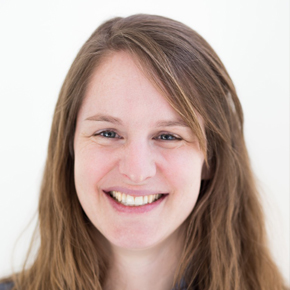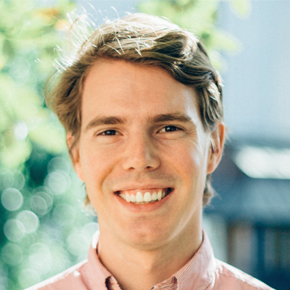Two researchers at Applied Physics recieves the Göran Gustavsson prize
Lucie Delemotte and Jonas Sellberg recieves the Göran Gustavsson prize for young researchers 2018
The Gustafsson prize for young researchers at the Royal Institute of Technology and Uppsala University comprises a research grant totaling 2,5 million kronor, over 3 years. The maximum age of the recipients is 36 years old.

Lucie Delemotte was born in north-eastern France in 1985. She graduated in Chemistry and obtained a doctorate in computational chemistry from the University of Lorraine in 2011. After a postdoctoral stay at the Institute for computational molecular science at Temple University, Philadelphia, USA and at the Laboratory for computational biochemistry and chemistry at EPFL, Lausanne, Switzerland supported by a Marie Curie fellowship, Lucie Delemotte moved to Science for Life Laboratory (SciLifeLab) and became an assistant professor at the Department of Applied Physics, KTH.
Lucie Delemotte describes her research as follows: To communicate with its environment, biological cells use membrane proteins, such as ion channels. These ease transport of ions across the membrane and allow propagation of electric signals. Genetic mutations in these proteins lead to protein malfunction and a variety of inheritable diseases, for example heart arrhythmia and epilepsy. To understand the details around how these molecular mechanisms work, I use what is known as molecular dynamics (MD) simulations. These simulations have an atomistic resolution as well as a time resolution in the magnitude of femtoseconds. Limitations on the method are thus in the time scale, that is, generating simulations sufficiently long enough to represent biological processes. I focus largely on developing protocols for enhanced molecular dynamics simulations, which circumvent these limitations and allow observations of biologically relevant phenomena. The collaborative work in the Delemotte Lab allows for a deeper understanding of the complex communication between membrane proteins and their environment, especially the lipid molecules in the cell membrane. The Delemotte Lab also tackles challenges such as to understand how genetic mutations, which can cause mutations leading to diseases such as heart arrhythmia, affect the protein. Understanding the reason why the proteins show deviating function or behavior can be used, among other things, to develop more effective drugs.

Jonas Sellberg was born in 1985 in Stockholm. He graduated in 2004 from Norra Real and studied afterward at the MSc program in Chemistry and Chemical Engineering at KTH Royal Institute of Technology with a specialization toward organic and physical chemistry, from which he graduated in 2009 after exchange year at University of Tokyo and summer internship at Princeton University. He defended his PhD in chemical physics in 2014 at Stockholm University and received Sigrid Arrhenius stipendium for eminent research during his graduate studies, which included three years as visiting physicist at SLAC National Accelerator Laboratory in 2010-2013. In 2014-2015 he was a postdoctoral fellow in biophysics at Uppsala University. In 2016 he returned to KTH as assistant professor at the Department of Applied Physics.
Jonas Sellberg describes his research like this: Light sources that produce coherent light has changed our society since the invention of the laser in the 1960s. Lasers are today involved in every phone call and e-mail. Lasers are also used to sequence DNA and correct defects of vision in a minute or two. For x-ray light, i.e. light with very short wavelength comparable to the distances between atoms, the invention of similar light sources has been delayed. It was first in 2005 that the world’s first soft x-ray laser started operation at DESY in Germany, and in 2009 the world’s first hard x-ray laser became available for users at SLAC in the US. The ultrabright and ultrafast x-ray pulses have since been used almost daily by scientists around the world to image cells and viruses, determine the structure of proteins and map electronic and magnetic properties of atoms, molecules and nanostructured materials. My research has been tightly connected with the development of the x-ray laser and I have since 2010 been involved in over 40 different experiments at x-ray laser facilities in North America, Europe and Asia, where they have so far been built. Even though the applications have varied, the experiments are mainly interdisciplinary and connects physics, chemistry and biology. The aim is often to get insight into chemical and physical processes that occur on ultrafast time scales comparable with the time it takes light to travel the width of a human hair. I have for example been involved in measuring the structure and dynamics of the hydrogen bonded network in water as the liquid is supercooled down to -46°C, imaging viruses and cells on nanoscale, and understanding how the electronic structure changes during chemical reactions, such as when photosystem transforms water into oxygen and when a heterogeneous catalyst oxidizes carbon monoxide into carbon dioxide. Collaboration is a central part of my research and I am today active in the group of scientists that develop a Swedish x-ray laser. Eventually, it has the potential to realize every molecular physicist’s dream – to record movies of macromolecular chemical reactions with atomic resolution.
More information regarding the Göran Gustavsson prize and for the news in Swedish visit: gustafssonsstiftelser.se/
